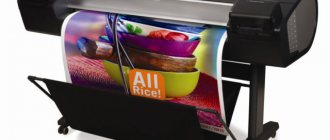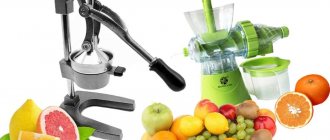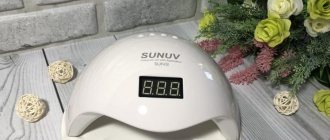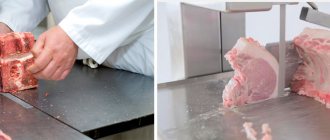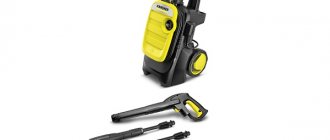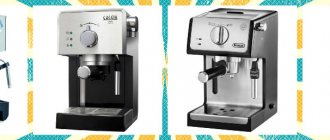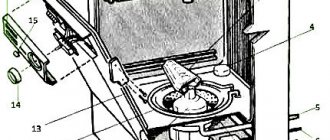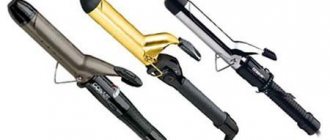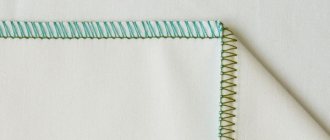Overlock is a special type of sewing equipment. An overlock stitch is necessary to finish the edge of the bulk material. As a result, the product takes on a finished appearance and looks neat. The device can also grind individual elements and decorate them. In industry, expensive multifunctional overlockers are used. At home, they use simpler equipment that can be purchased at an affordable price.
What is the difference between an overlocker and a sewing machine?
A sewing machine uses two threads to form stitches, which are intertwined with a shuttle to form a stitch. Overlock differs in that the process of its operation involves not 2, but a much larger number of threads (up to 10). Models with 4 threads are in greatest demand.
An overlock stitch made with an overlocker is elastic and strong. During the process, the edge of the material is simultaneously trimmed. There is also a combined type of equipment called a carpetlock. The device is a sewing machine with overlock functions and is used more often in professional sewing.
Selection and tension of threads
A high-quality professional seam can only be obtained with the correct thread tension. The regulation principle is the same for all modern overlockers, regardless of the country of manufacture.
The regulators are located on the outside of the machine body. As a rule, there are 4 threads, as well as regulators. The tension value can vary from 0 to 9. The digital value corresponds to a specific tension force:
- from 0 to 3 – weak;
- from 3 to 5 – average;
- from 5 to 9 – strong.
Practice shows that in most cases overcast seams can be made with a tension value of 4.
The value setting depends on the thickness of the fabric and the type of thread. For high-quality overcasting, it is important that in one seam all 4 threads are of the same type and thickness. The thickness of the needles is also of great importance, which should correspond to the density of the fabric. For some overlocker models, the instructions indicate the recommended brand of needles and their numbers.
How an overlocker works and works
Overlockers are designed differently and differ in the scope of functions performed and other parameters. In particular:
- number of threads used;
- method of threading (it can be manual or automatic);
- thread tension adjustment system;
- type of knives;
- stitch options;
- stitch size;
- presser foot pressure.
The most advanced equipment is equipped with an electronic scoreboard and touch controls. On inexpensive devices, adjustment is usually done manually. Before you start working on the overlocker, it is threaded with the selected threads, and then the desired mode is set. Only after this does the overlaying itself occur. The needle stitches the fabric while simultaneously overcasting the edge.
Excess material is cut off and placed in a special tray. The fabric is drawn using a conveyor. To work with delicate types of material, you will need a removable converter. An overlocker is necessary when working with knitwear, delicate and elastic fabrics.
Features of working with knitwear
The sewing machine is difficult to sew knitwear, as it is thin, stretches a lot, and crumbles at the cut site. For this type of fabric, an overlock machine is more suitable. Knitwear products are very comfortable to wear, but require certain conditions when sewing. So, how to sew knitwear correctly? Such fabric requires maximum elasticity of the seam, which will stretch and at the same time maintain its original shape. Errors in the stitching are always very noticeable on knitted clothes; moreover, they can come apart when washed. An overlocker with the possibility of differential feeding of knitwear is most suitable for sewing such products.
Overlocker JUKI PE 770 PROFESSIONAL EDITION
The fabric is fed on a special conveyor that allows the fabric to be stretched or contracted where required.
For high-quality processing of the neckline, armhole and bottom of the product, you will need the appropriate overlock setting.
- Thin threads for knitwear are required; in extreme cases, they can be replaced with polyester ones.
- Special “stretch” needles will be required.
- You can sew on an elastic band or make a neckline by installing an additional knitwear foot.
- An overlay film on fabric that will then dissolve in warm water.
After replacing all the necessary elements, you need to configure the overlocker to work with knitwear. To do this, adjust the needle tensioners and looper, as well as the presser foot pressure. Considering that the design of overlockers from different manufacturers differs, there may be some nuances in the execution of seams. This indicator is affected by the length of the foot and the distance of the knife from it. If the distance is short, it is easier to make maneuvers. With an elongated foot, it is more difficult to make small radius curves.
In order for the product to be flawless, and to create a desire for new design inventions, it is important to practice making beautiful and durable seams on a test fabric.
How to make an overlock stitch
Classic overlock stitching on an overlocker is performed using 3 or 4 threads. A three-thread stitch is performed in order to prevent the fibers of dense fabric from fraying along the edge.
- The optimal width of the overlock seam in this case is 4-6 mm. It is important to ensure that the thread tension is correct so that it does not become loose.
- The threads must be intertwined strictly at the cut, without shifting to the front or back side. On the front side, the needle thread forms even, smooth stitches; on the back side, barely noticeable dots remain on the fabric.
- The four-thread stitch is wider - up to 9 mm, its width depends on the overlocker model. A 4-thread overlock stitch leaves 2 parallel lines of needle thread and a looper thread crossing them on the right side, and 2 rows of small dots are formed on the wrong side of the fabric.
The seam should have a tight tension and weave along the edge of the fabric; due to the additional needle thread that fixes the stitches, this stitch is stronger.
Tips for using an overlocker
- Insert one conical bobbin at a time, starting with the upper looper, moving to the lower looper and to the needles.
- Before threading, make sure the telescopic thread guide is fully extended. Raise the presser foot and set the tension to zero so that each spool rotates easily.
- Always ensure that the thread is firmly secured to the appropriate tension discs.
- When you have finished threading, lower the presser foot, turn on the machine, and press the pedal to check the stitching.
- Different models of overlockers will have their own specifications. So read your manual twice to check each step mentioned above. If the thread comes out of the needle or looper, remove each spool and rethread.
Purpose and technique of rolled seam
A rolled seam can also be done with a sewing machine, but an overlocker will perform it better. In translation, the name of this seam sounds like “twisted edge,” which speaks for itself. You have to use it when you need to finish the edge of the material with a simultaneous hem. The edge processed with a rolled seam looks like a stitch twisted inward.
It is in this technique that it is customary to sew frills of a skirt or dress together. The seam is used when creating concert costumes, as it simultaneously decorates the fabric. It is also used in sewing knitwear and processing tulle. To make a rolled seam, the stitch length is reduced to a minimum when adjusting, thereby changing the width of the stitch and promoting its curling. Other types of decorative stitches require more sophisticated equipment.
Adjusting stitch length, presser foot pressure and edge width
Most overlockers provide the ability to adjust presser foot pressure, stitch length, and hem width. Thanks to the presser foot pressure regulator, you can work with both thick and light fabrics. The length is adjusted using the function of increasing and decreasing the distance between stitches. At the same time, the cutting width adjuster moves the blade closer or further from the needle plate.
The fabric will curl under the overlock stitch if the cut width is too wide. When the cutting width is too small, the stitches tend to hang over the edges. These parameters can be adjusted using needle wheels or sliders, depending on the model and brand.
Some overlocker models have a function to turn off cutting with the blade. This feature is very useful when using an overlocker to decorate materials.
liveinternet.ru
To begin sewing seams, align the edge of the fabric you want to sew with the seam guide to the needle plate. This will help the needles sew along the seam line and the blade to trim the edges evenly for a neater finish. In most sewing machines, the needle feed mechanism will pull the fabric through the needle plate immediately after the pedal is turned on.
burdastyle.ru
While processing, do not pull or pull the fabric yourself. Trust the material feeding technology and calmly guide it under the presser foot.
burdastyle.ru
Setting up an overlocker
Before adjusting the overlocker for a specific fabric, its operation is tested on a small piece of the selected material. You will need to set up your overlocker not only when changing from one type of fabric to another, but also when working with new threads. When creating one seam, the threads must be of the same thickness in order for the stitch to be uniform.
It is better to purchase high-quality consumables. Cheap threads often have knots and thickenings, which can lead to breakage. When setting up an overlocker, the main thing is to pay attention to adjusting the thread tension. This process is described in detail in the instructions for each equipment model.
First, the threads are loosened, and then the tension is gradually increased, starting the overlocker at a slow speed. For adjustments, it is better to use threads of contrasting colors in order to track which of them makes the stitching uneven and make additional adjustments.
The stitch length for most fabrics is kept within 2.5 mm. It is increased if heavy fabric is used for sewing. The distance from the game to the knife is selected individually, on average this value is 5 mm. It is necessary to regulate not only the thread tension, but also the feed speed of the fabric. On some models, you can further adjust the presser foot pressure using a screw.
Why do you need to set up an overlocker before starting work?
Correctly threading the threads in the overlocker and adjusting their tension are the main conditions for obtaining high-quality stitching on the product. You can learn in detail how to carry out such manipulations from the instructions for the machine.
New overlockers have universal settings made at the factory. They are suitable for most fabrics. After purchasing the machine, you can sew on it. Over time, the settings get lost. Before starting work, you need to make a test seam on a piece of fabric and, if necessary, adjust the settings.
You also need to set up the machine before starting to process a new type of fabric by adjusting the thread tension. It is recommended to make a control seam on a sample when the type and thickness of the thread changes, since overlockers are very sensitive to changes in such parameters.
Overlock for knitwear
If you often need to overlay knitwear, it is better to choose a model with a differential. In this case, it will be possible to make neat, unstretched seams, or, conversely, to ensure that the edge of the knitted item is wavy. On such an overlocker, the material can be intentionally gathered or, conversely, stretched while overcasting the edges. The function of differential feeding of fabric is ensured due to the uneven movement of the conveyor teeth. With this overlocker you can not only overcast seams, but also sew knitwear.
Sewing like on a simple machine
Beginning needlewomen wonder how to sew with an overlocker. Experienced seamstresses have different opinions. This machine is designed for fabric processing only. But sewing is also allowed. However, it is recommended to work with knitted fabrics. And the device itself must be five-thread. However, it is not recommended to use this technique often. Things created this way are extremely unreliable. They spread quickly. The purpose of the overcast seam is completely different.
Important! A single-needle device is used to process the edges of blankets.
Four-thread overlock
Overlock foot for sewing machine
For those who rarely work with a sewing machine, there is no point in purchasing an overlocker. However, purchasing additional equipment will require a lot of money. An overlock foot for a sewing machine can handle its simplest functions. The device is attached to an existing sewing device and provides a very high-quality overcast edge.
The overlock foot needs to be installed instead of the universal one. High-quality operation of the device is possible thanks to its special design. Often an overlock foot is included when purchasing a sewing machine. After installing it, the seamstress will only have to select the stitch type in the equipment settings.
Flat seams with two or three lines
It all depends on the number of needles in the carpet with parallel lines on the front side and overcasting on the back. Seams of this type are used to hem the bottom of a product made of elastic material. Flatlock seams can also be used to finish the sleeves and bottoms of thin knit T-shirts and tanks. By using all three needles, you can make a wide cover stitch (working with the outer needles). When working with the middle and outer needles, you can get a narrow cover stitch. By working with only one needle you will get a chain stitch seam.
An overlocker equipped with an additional upper thread guide is able to perform double-sided cover seams. The operating principle of this type of overlocker is as follows: when working on the front side of the product, there will be not straight parallel lines, but complex decorative weaves. Machines of this type are able to perform more than five types of double-sided cover stitches. True, such cars are not cheap.
How to overcast a seam by hand
If there is no special equipment in the form of an overlocker and a modern sewing machine, you can do the overlaying manually using a simple buttonhole stitch.
These stitches are used to sew buttonholes. You should try to make stitches of the same size at a certain interval, then the processed edge of the material will look neat. There are also more complex hand-stitching techniques, which are best learned from video.
An overlocker is a convenient device for processing the cut edge of fabric. With its help, the product takes on a finished look. Such equipment will not be superfluous in the home of those who sew quite often. In other cases, you can get by with using an overlock foot, or even overcast the product by hand.
Overlock stitch
Overlock stitching is an important step in creating or repairing clothing. Sewing the edge of the fabric helps make the product strong and beautiful. Thanks to it, the edges do not crumble and become durable. Rapid stretching is prevented. Clothes that have been well processed are not easily torn. If the edges remain “raw,” the fabric will not last long.
Important! Overlock stitching on any sewing machine is only an imitation of high-quality processing.
In addition, overcasting is an important step in restoring and repairing old clothing. It helps restore the edges of the fabric to their original appearance.
What does an overlock stitch look like?
Popular car models
Almost all manufacturers have provided a special line. But it’s worth considering the most popular ones.
- Astralux 700 is a popular option with an overcasting line.
- Brother LS300 is a budget option for light to medium weight fabrics.
- Janome 419S is a device for any materials.
- Singer 4432 - allows you to sew complex items and repair clothes at home.
If we consider overstitching devices specifically, we need to pay attention to the manufacturers Astralux, Singer, Podolsk, Dzhuk.
Popular model with overlock
Tips for choosing seams
The overlock machine has all the capabilities to carry out work that allows maximum maneuverability when creating overcast stitches. When choosing a machine and stitch, keep the following in mind:
- If you buy an overlocker only to overcast edges, then you can limit yourself to a machine that allows you to work with two or three threads. And if you plan to make products with decorative stitches, then it is better to purchase an overlocker with a four-thread overlock.
- The presence of a differential feed option makes it possible to process elastic fabrics and produce assembly elements or flounces.
- Due to the fact that the width of the cut is adjustable, it is possible to make one seam in different versions.
Thanks to the variety of stitches produced by overlocking machines, you can implement any sewing idea and achieve a good result in your design solution. The main thing in this matter is to have a high-quality overlocker that satisfies all the needs of the seamstress.
You can also find out which sewing machines are considered the best.
What else affects the line?
In addition to the listed settings, important factors for the correct operation of the overlocker are:
- using a high-quality needle of the appropriate type. A dull or bent needle will cause skipped stitches and the machine will make a clunking noise while sewing. You can detect the curvature by touch or using a magnifying glass, but you need to pay attention to the entire length of the needle. A damaged copy cannot be repaired; a new needle must be installed in the overlocker;
- correct threading. Check the accuracy of threading all threads by checking the instructions for the machine;
- timely cleaning and lubrication of the overlocker. Operating at high speed, the machine requires regular maintenance. Scraps of thread and fabric accumulate in the mechanism and can lead to various machine malfunctions. To clean, open the side cover and clean the inside with a hard brush, and lubricate the various components with special oil using a syringe.
Overlock processing of cuts gives the product a professional look. Achieving the perfect stitch requires precise adjustments and careful maintenance of the machine. Carefully read the instructions and recommendations on how to set up a specific model. Before each new project, take the time to maintain the overlocker and check the sewing parameters, and the appearance of the product will satisfy the harshest critics.



